While birding the east slope of the Andes in Ecuador one bird that was relatively common was the Inca Jay, a bird  that was until recently considered merely an interesting population of Green Jays by all of the listing authorities. But in 2009, the International Ornithological Congress* split the Inca Jay Cyanocorax yncas from the Green Jay, which was renamed Cyanocorax luxuosus. Though many field ornithologists had apparently long considered the two birds separate species based on differences in appearance, behavior, vocalizations, and their disjunct range, the scientific evidence is not terribly developed. In fact, the IOC decision to split the species is backed up by “The distinctive Cyanocorax luxuosus of Middle America is split from C. yncas (Ridgely & Greenfield 2001; Hilty 2003); AOU may review. Note switch of Green Jay from C. yncas to C. luxuosus.”
that was until recently considered merely an interesting population of Green Jays by all of the listing authorities. But in 2009, the International Ornithological Congress* split the Inca Jay Cyanocorax yncas from the Green Jay, which was renamed Cyanocorax luxuosus. Though many field ornithologists had apparently long considered the two birds separate species based on differences in appearance, behavior, vocalizations, and their disjunct range, the scientific evidence is not terribly developed. In fact, the IOC decision to split the species is backed up by “The distinctive Cyanocorax luxuosus of Middle America is split from C. yncas (Ridgely & Greenfield 2001; Hilty 2003); AOU may review. Note switch of Green Jay from C. yncas to C. luxuosus.”
The two citations might seem like an impressive display of evidence for the split but the works being referenced are field guides! And while no one (least of all a lowly bird blogger) is going to question the credentials of Robert Ridgely and Paul Greenfield, who, after all, wrote and illustrated The Birds of Ecuador, the book I used on my recent trip, or Steve Hilty, who also has an impressive resume full of field guide writing, including the referenced Birds of Venezuela, field guides do not seem to me to have the scientific gravitas necessary to determine if a species should be split. But it seems like that is what the IOC did here in 2009!
You might have noticed that the IOC referenced the fact that the “AOU may review.” The “AOU” refers to the American Ornithologists Union and their South American Checklist Committee has taken no action despite recognizing that the two field guides already referenced have split Cyanocorax ynca. Why has the committee taken no action? No one has written up a proposal suggesting that the bird be split yet!** Oddly, there is a reference in the footnotes of the checklist to the fact that previously the bird had been considered two species but had, at some point, been lumped, but no reference for why or when this happened is given.
Inca Jay Cyanocorax yncas
Now, for the record, I am certainly not saying that the species should be lumped by the IOC. After all, I have seen both species and my life list, which I keep on the IOC checklist, would suffer if they were lumped! And the two birds certainly look different as you can see from the pictures with which I have illustrated this post. The few birders I have asked who have experience with both birds support the split too. But beyond the obvious “They look different and live in different places” what actual scientific evidence supports the split?
Green Jay Cyanocorax luxuosus by Mike Bergin
Here is where the fact that I know birders who actually have a scientific background and are willing to look up interesting stuff comes in to play (Thanks, Shawn!). Last year a paper entitled “Molecular systematics and evolution of the Cyanocorax jays” with Elisa Bonaccorso credited as the lead author was published in Molecular Phylogenics and Evolution. In it is the answer I was seeking!
C. yncas sequences separated into distinct groups corresponding the disjunct North and South American portions of the range of the species. Differences in plumage, habitat preferences, social behavior, and vocalizations suggest that these populations might represent distinct species…Further analysis of populations from across the range of the species, particularly in Central America and northern South America, will be crucial in assessing their validity as independent evolutionary lineages.***
So, while it is couched with caution and tempered by a need for more data, as is only suitable for a scientific publication, it is pretty clear to me that this is a pretty darn big step towards solid scientific evidence that we have two different species. After all if they look different, act different, prefer different habitat, sound different, and have different DNA then one would think that they are different species. But, as Nick Sly pointed out to me in an email:
I think it’s simply a matter of taste – they look different, they have separate ranges, and they are genetically distinct (although they are sister species). Without being able to test hybridization because of their separate ranges, there is really no more evidence you can bring to bear on it. Some people like to split, some don’t.
What is the ultimate lesson to be learned here? For me it is that though theoretically there is a definition of what a species is, in practice that definition can be somewhat mutable and open to interpretation. Biology is messy and when it comes to taxonomy the well-ordered and clean checklists can hide a whole heaping mess just beneath the surface. All I was looking for when I started this post was a clear, concise, explanation as to why and when the gorgeous and gregarious jays I saw in Ecuador were considered a different species from the jays I saw in Honduras. As you can see, no such explanation is available but I have been fascinated by what I did find.
Inca Jay Cyanocorax yncas eating a moth
*Which has itself changed its name to International Ornithologist’s Union. Despite the name change they, and everyone else, still refer to their checklist as the “IOC list.” If the list-makers can’t even keep their own name straight how can they get the birds right?
**Interesting, but ultimately irrelevant is the fact that the same document that is linked let me know that Cyanocorax ynca was, until 1953, in a monotypic genus and was considered Xanthoura ynca.
***I removed footnotes from the quote to increase its readability. Each and every difference mentioned is backed up by a footnote in the original.
Inca Jay Cyanocorax yncas
…


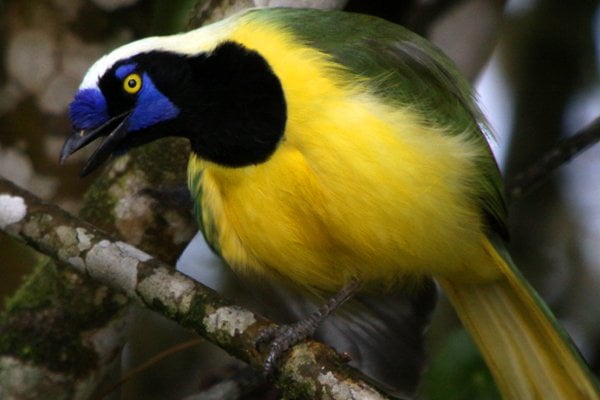
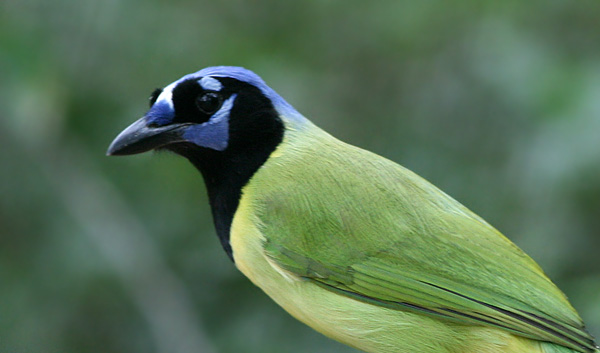
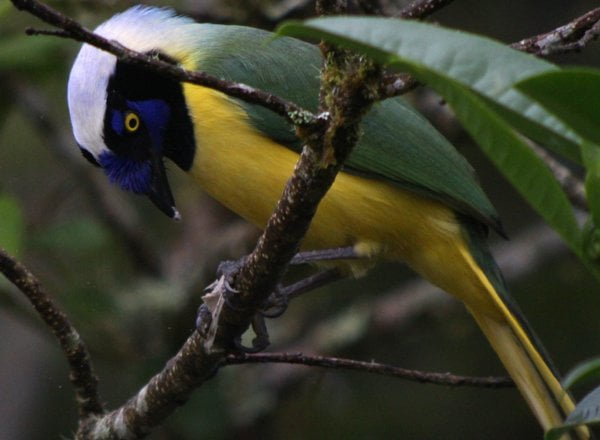
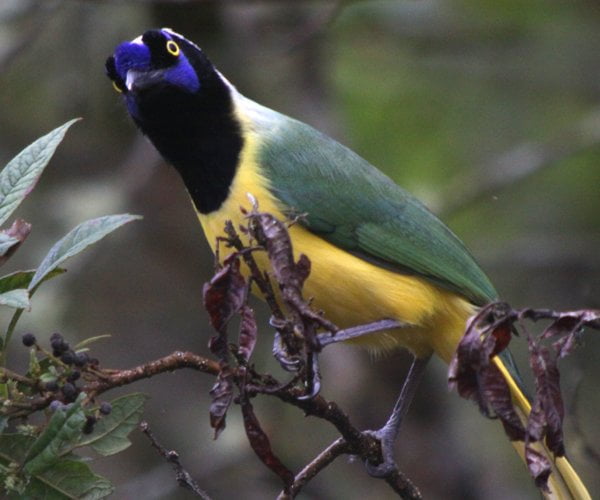











When there is no overlap in range I tend to support the premise: “All birds are a different species until proven to be the same species.”
Yeah, I’d like to see the evidence for the lump. How the authors would argue that two non-migratory populations that live in two non-overlapping home ranges separated by thousands of miles are the same species would be very interesting.
This seems like a pretty cut and dried split to me.
While I know I should really care whether they’re separate species or not – can I just say, WOW, what a stunning bird. And such an erudite post – ah, when I think back just a few short years to when Corey began his birding career *wipes paternal tear from eye* 🙂
By the way, I saw mention of a recent Birdquest trip to Ecuador where they racked up over 800 species! That’s more than a lot of birders’ life lists! I have got to get to Ecuador…
Thanks so much for throwing light on the Green/Inca Jay situation. I had often wondered about evidence in support of this proposed split.
It is a good example of difficulties posed in assessing species level classification and a reminder that at the end of the day conclusions about classification are hypotheses and that if one is going to carry out systematic research in a scientific manner, one has to be conservative in interpreting results. This is why the authors of the paper neglect to argue for proposing species level status for each group of jays although they certainly hint at it. It sounds like they prefer to investigate birds from or near the contact zone between each group of jays to assess the presence of a hybrid zone.
Pesonally, I think that the AOU is going about the matter as it should be treated as opposed to basing their decisions upon information from field guides. Sure, there is a good chance that the two should be treated as different species but if checklists are to be based on scientific research, it looks like we have to wait for a bit more data in this case.
@Birding is Fun: That is a bit further than I would go (I would not envy the person stuck proving that Barn Owls are the same on each continent…and actually, the IOC has them split in half, if I remember correctly). But in this case, where the birds look, act, and sound different, yeah, why would they be one species?
@Nate: Exactly!
@Charlie: Aaaw, shucks…and, yes, Ecuador needs a visit from Mr. Moores!
@Pat ODonnell: While I certainly understand the caution of the paper’s authors I think that it is odd that the bird was ever considered one species, especially when the reason for the lump is obscure (can anyone please help me figure out why it was lumped?). I like the IOC for its forward-leaning splitting, especially as they seem to get it right (I haven’t seen them miss yet, but, then, I am not an expert). This is one where it seems that everyone who has knowledge about these birds thinks the split makes sense so why not acknowledge that?
Yeah, good question- who lumped them in the first place? I would bet that most systematists on the AOU and South American comittees expect that they should be treated as separate species as well but for the sake of being scientific about the matter arent going to make a decision until someone submits a proposal arguing for the split (which could be rejected until birds from and near any contact zone are studied). As for myself, I agree that they certainly seem to be two separate species.
I think there are many many species in South America that need their taxonomy shaken out, the Green Jays are just one. I don’t know if you guys have seen the new Princeton Press Guide to Parrots, but one thing that struck me were the multitude of Psitticids with multiple subspecies that look completely different, are separated by literally thousands of miles, and are still considered conspecific.
It’s wild, and probably indicative of the backlog the South American AOU group seem to be dealing with. It seems overwhelming, and that’s without even discussing the new species that show up from time to time.
I’m certainly no expert, but I think the recent split of the Blue-crowned Motmots was an indication that the AOU is going to work their way through these taxonomic questions, but it may take some time.
I’d still like to see the lump argument, though.
Thanks very much for this erudite and helpful explanation – not to mention the great photos!
i just got back from Colombia.
On a personal note, I will be in Brooklyn from March 30, thru April 8. Please offer me some advice
about what birds are coming through then and where I might go. I usually do Central Park, but
these dates are pretty early. Please reply to jroller9@gmail.com
I am on the board of both the Colorado Field Ornithologists and the Rocky Mountain Bird Observatory
and a keen birder. Thanks in advance.
To Cory: Steve Hilty has a PH D. He was part of a clutch of Bird people who were at the University of Arizona in the 1970’s. Plus co- aouthor Birds of Columbia and just did the Tanagers for the Lynx Birds of the world. Some folks don’t like that it does not follow the latest DNA based taxonomy. But such a huge project the format was set about 15 years ago.
Among the UA folks were the late Ted Parker who knew well over 3000 species by call and discovered a new flycatcher by call. Mark Robbins was teds roomate and now is collections manager at U. Kansas. Doug Stotz who spent years in S.E.Brazil. Ken Rosenberg was about now at Cornell.
Also a fellow who has gone on to a bit of fame, Kenn Kaufman of various guide books. I met him while we where looking at bird skins.
Even earlier William(willy) Schaldach jr. was around and gave the collections both birds and mammals from Mexico. If you have Howell and Webbs Guide to birds of Mexico and Northern Central America, willy along with parents, are the persons the book is dedicated to. Schaldact had no degree but collected a new species of bat Musanycteris
harrisoni in Colima Western Mexico. Later he lived for many years in Catemaco, Veracruz. He found a new species of fresh water fish whose type locality tag read: Mexico, Vera cruz, MUN. Catemaco/fish market.
Muito esclarecedor este relato, em 2015 fotografei uma delas e não tinha certeza do ID da ave, agora sei que se trata do Green-jay = Cyanocorax-luxuosus.